Stephen Lawrence: Who was he and what happened to him?
- Published
WATCH: Stephen Lawrence's younger brother Stuart goes back to his old primary school
Stephen Lawrence was a black teenager who lived in Plumstead in south-east London.
On 22 April 1993, Stephen was killed in a racist attack by a gang of white men.
His younger brother Stuart is using one of the darkest times for their family to make a difference.
Stuart has written a book called Growing Up Black in Britain and he's returned to his old primary school to answer questions from children there.
But who was Stephen and what happened to him?
Find out more below.
What happened to Stephen Lawrence?

Stephen Lawrence was 18 years old when he was killed in 1993
In 1993, Stephen was studying for his A-levels and wanted to be an architect when he was older.
He lived with his mum Doreen, dad Neville, brother Stuart and sister Georgina.
On 22 April, Stephen was killed by a gang of white men in a racist attack.
He had been waiting for a bus with a friend when the gang attacked them.
Stephen's friend escaped unhurt but Stephen died from his injuries.
What happened to Stephen's killers?
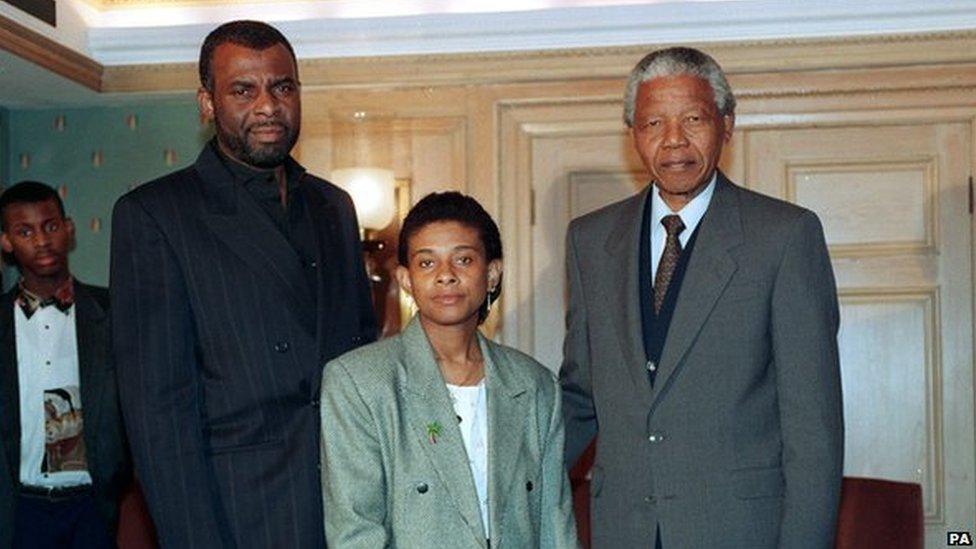
The Lawrence family met with former South African president Nelson Mandela soon after Stephen's death
After Stephen's death, police started to investigate suspects who they believed were responsible for the attack.
But Stephen Lawrence's family felt that not enough was being done to capture Stephen's killers.
Nelson Mandela, the president of South Africa at the time, met with his family and called on the police to do more.
Although some suspects were charged with Stephen's murder, these charges were dropped before a trial could happen.
A report in 1998 - called the Macpherson report - looking at the death of Stephen Lawrence suggested the case had been dealt with in an institutionally racist way by the police because the investigation had not been handled with the same care that a case involving a white person would have been.
Institutional racism is where racial discrimination is established as a normal behaviour within organisations.
It means that people from black or other minority backgrounds are not treated the same as white people.
That's because the people making the decision to take the suspects to trial said there was not enough evidence to prove the suspects had murdered Stephen.
In August 2020, the Metropolitan Police declared the investigation into Stephen's death "inactive".
The Metropolitan Police is the UK's police service for Greater London, not including the City of London, which has its own police.
The Metropolitan Police - also known as The Met - is the biggest police service in the UK.
They said "all identified lines of inquiry have been completed", which means no one else can be taken to trial and held responsible for Stephen's death unless the case is later reopened.
The Metropolitan Police commissioner, Cressida Dick, said she was sad the Met had been "unable to secure any further convictions for Stephen, his family and friends".
She added: "The investigation has now moved to an inactive phase, but I have given Stephen's family the assurance that we will continue to deal with any new information that comes to light."
Why was the investigation into Stephen's death criticised?
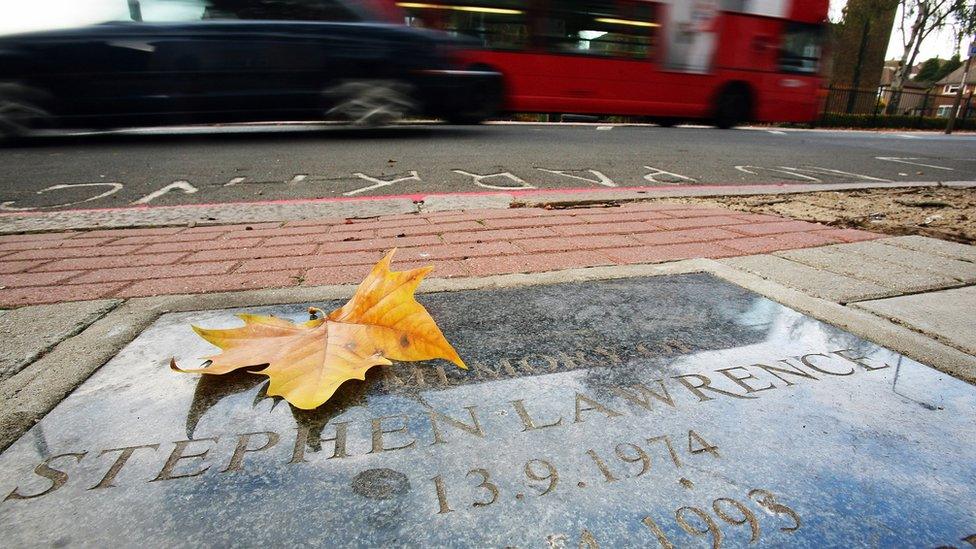
A plaque was laid at the spot where Stephen Lawrence was attacked
In the months and years that followed Stephen's murder, Stephen's mum and dad kept fighting for justice for their son.
Many people believed the police treated Stephen's case differently because he was black - and that some officers acted in a racist way.
An inquiry into Stephen's killing and the police investigation was held and in 1999 the Macpherson report found the Metropolitan Police were institutionally racist.
The report found that racism was an important factor in the failure of the Metropolitan Police investigation into Stephen Lawrence's murder.
It also found the problems amounted to "institutional racism" and highlighted racism at both an individual and institutional level.
This means that racist attitudes and beliefs were seen as normal in the Metropolitan Police, and affected how they investigated Stephen's murder.
Did Stephen get justice?
WATCH: Advice to help you if you're upset about racism
In 2012, two of the original suspects in Stephen's killing, Gary Dobson and David Norris, were found guilty of his murder and were sent to prison, after new evidence was found.
Although there were other suspects in Stephen's murder, the Metropolitan Police has closed "active" investigations, but said it would look into any new information that emerged later on.
Despite the outcome, Stephen's mother, Baroness Doreen Lawrence, has said she will continue to seek justice for her son.
"Whilst the Metropolitan Police have given up, I never will," she said.
"I am truly disappointed that those others who were equally responsible... may not be brought to justice."
What was the impact of Stephen's death?
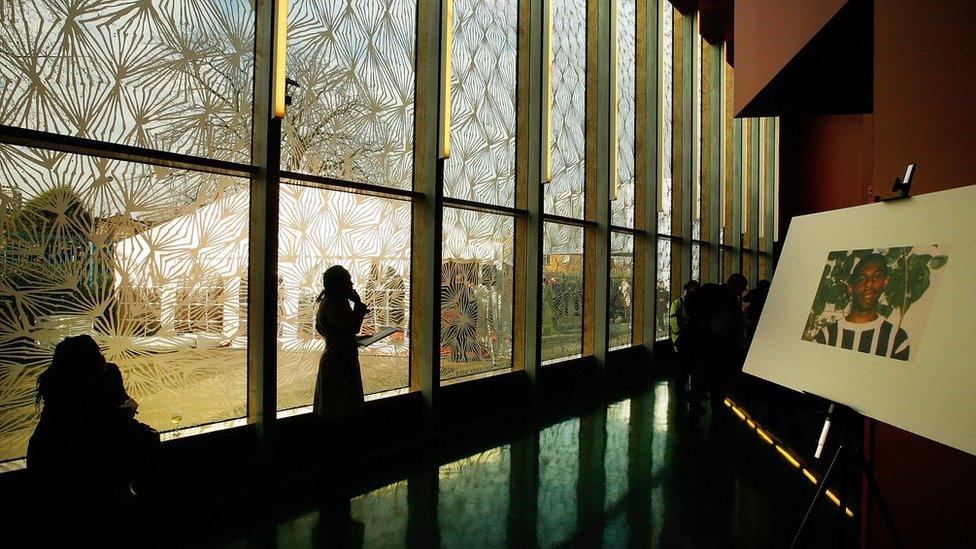
The Stephen Lawrence Centre opened in South London in 2008, to inspire young people to follow their dreams
For many people, Stephen's murder and the investigation into it by the police showed there was still a lot of racism in Britain.
Stephen's father, Dr Neville Lawrence, said his son's murder "opened the country's eyes" to racism.
Doreen Lawrence set up a charity in his name to give other young people the opportunities that Stephen missed out on.
Stephen Lawrence Day was also created by the Stephen Lawrence Foundation as a celebration of his life and legacy.
It exists "to inspire a more equal, inclusive society, and to foster opportunities for marginalised young people in the UK" and is commemorated annually on 22 April - the day Stephen was killed.
What is the Casey report?
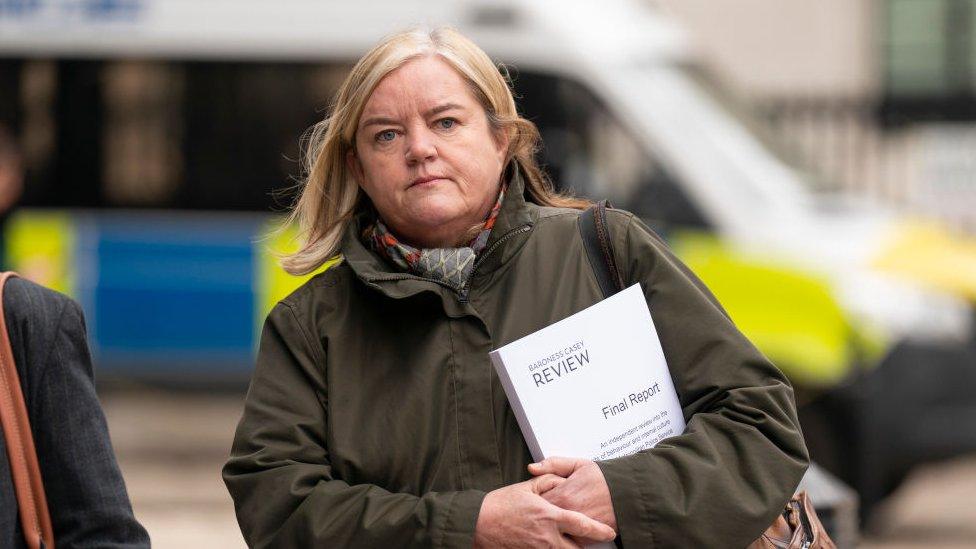
Baroness Casey is the person who wrote the review - which is why the report is named after her
In 2021, the Metropolitan Police announced there would be an independent review into police behaviour, after a Metropolitan police officer was found guilty of murdering a woman called Sarah Everard.
The job to investigate was given to a politician -Baroness Louise Casey - to find out how many police officers were breaking the law and their own rules.
The Casey review looked at the behaviour of officers and was highly critical of the police force.
It found there were big continuing problems of homophobia, misogyny and racism - against both staff and the public.
Homophobia - Treating someone unfairly because of their sexuality, for example if they are lesbian, gay, or bisexual
Misogyny - The term for sexism specifically against women
Racism - Treating someone unfairly because of their race, where they are from, or the colour of their skin
The report found that police officers were breaking their own rules, and that inside the police service, officers were being bullied and treated unfairly by others.
It also said that black Londoners remained "over-policed and under-protected".
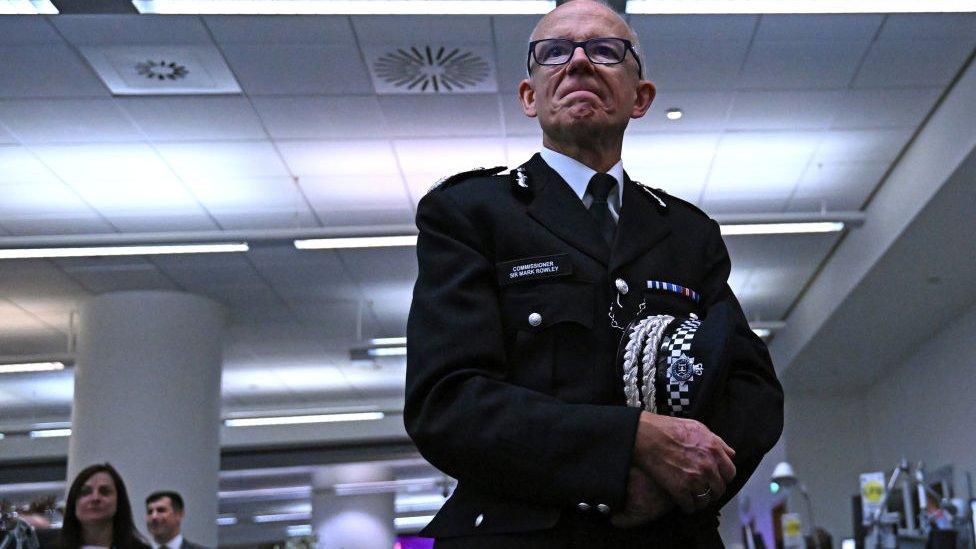
Sir Mark Rowley is the Chief Commissioner of the Metropolitan Police - which means he is in charge of the police in Greater London
Sir Mark Rowley, who is in charge of the Metropolitan Police Service, apologised to people in London when the report came out.
Sir Mark said he accepted there was racism, misogyny and homophobia in the Metropolitan Police - but he refused to use the term institutional.
Baroness Lawrence said it was "no surprise" to her that discrimination "in every form is clearly rampant in its ranks" and said the Metropolitan Police was still "rotten to the core" 30 years after her son, Stephen, was murdered and the force was found to be institutionally racist.
In the lengthy report, there were 16 recommendations made for how the Metropolitan Police should change to improve from these issues.
Among other things, it asked for more outside, independent experts to get involved to check that police were keeping to their own rules, and looking after the public.
